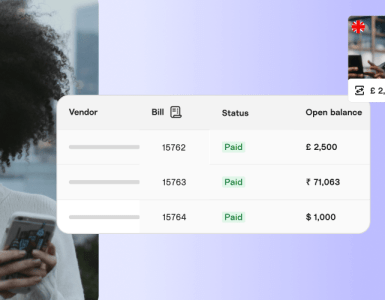Do you know what the best part about working as a freelancer is?
You get to be your own boss.
Now, do you know the worst part is?
You have to be your own boss.
What separates freelancing from the rest of the professions and businesses is the fact that you have to do everything independently. This includes day-to-day management, promotion, client servicing, expansion and pretty much everything else you can think of.
While freelancing does offer a lucrative revenue stream, it demands you wear every hat required to run your business. As a beginner or even an intermediate professional, it can get a little overwhelming.
What holds the utmost importance is the need to keep up with your marketing objectives. Once you have gained a comfortable client roster, it can be very tempting to slack off. However, marketing your freelance business is a continuous game. Stop once, and you’re on a slippery slope to running out of clients.
It doesn’t have to be so. Dedicating a definite time of the day towards promotional activities allows you to match the changing trends and earn a handsome income on the go.
So, where do you start with marketing yourself online?
Since there are endless roads to this destination, we have come up with 5 tactics for establishing a personal brand and bringing in those big-ticket clients.
Ready? Let’s dive in!
1. Create a Website
A website is your real estate on the internet.
Think of it as the endpoint of your marketing funnel. All your promotions, content and campaigns must direct towards bringing your prospects to your website. To understand what an ideal site should look like, pick any digital marketing firm like MintTwist and see what they are up to.
Acting as an indicator of trust, your website is the best conversion machine you’ll ever invest in. The following pages need to be primed and personalized for the best experience –
Homepage:
The landing page for your prospects needs to be completely value-oriented. Trim off any excess or confusing content and put your best foot forward with a proposal that acts as your ideal client’s solution.
Portfolio:
The portfolio page is where you provide your prospects with a reason to hire you. Showcase your work by creating different categories that align with the prospective client’s propositions. A well-made portfolio page should project your work style and capabilities to the fullest.
About Me:
In contrast to what you might think, the About Me page is not where you pen your autobiography. It’s your chance to express how your values and experiences make you perfect for the job at hand. It’s important for the prospect to find similarities between who you are and what they are looking for in order for them to hire you.
Contact:
Although concise, this is the single most important part of your website. The contact page contains the final CTA that converts your prospect into a paying customer. You can additionally answer some FAQs here to make the transition smooth and simple.
2. Go Where Your Clients Are
No matter what stage of your freelance career you’re in, it’s rare to find a client that agrees with your prices, has a clear vision and pays your invoices on time. Looking at job boards and freelancing platforms such as Twine can be a start, but you’ll need to conduct thorough audience analysis to sustain your business model.
Businesses don’t hire freelancers because they are popular; they hire them because they’re experts in their respective fields. To portray yourself as an industry expert, you need to build and demonstrate your authority within your industry.
Now that you know what to do, here’s how to do it:
Be active in all the message forums, platforms, events and websites where your prospects usually hang out. The key is to deliver value without expecting anything in return; solving queries that surround your line of work and showcasing your expertise makes you an integral part of the community.
So, the next time someone needs assistance, they’ll know who to call!
3. Synergize Your Digital Presence
A strong digital presence is one of the determining factors for any prospect when they research a freelancer. Hence, creating an aura that represents your personal brand on all social networks should be a top priority.
Social Media Strategy:
Social media has gone past its days of being only about fun and frolic. You need to win at it every day in order to stay a step ahead of your competitors.
There are five components to every social media strategy:
- Target audience
- Content
- Brand tone
- Engagement metrics
- Post frequency
Each aspect builds upon the next so that all of your marketing activities amplify your brand image and increase your overall reach.
Email Marketing:
Never underestimate the power of a good email.
While it is one of the oldest customs of digital marketing, cold emailing is as effective as ever. Using your other platforms (such as your website), build an email list for people interested in what you have to say, and don’t forget to include your email signature! The smart move here is to create a drip campaign that follows this order:
- Email 1: Informational content
- Email 2: Educational content
- Email 3: Promotional content
But let’s face it: emailing can be time-consuming. You can only email so many people at once. Luckily, there is a lot of cheap and free email marketing software that can help automate your email marketing campaigns. Leaving it to the tech experts allows you to contact large groups of people/potential customers at once, and have enough time to do other tasks.
Advertising Campaigns:
Everyone uses Google and Facebook Ads for a single reason – they work! Once you have created a persona over different networks, harness the power of advertising to reach prospects outside of your normal reach. When backed by an established social media presence, website and portfolio, paid marketing can bring you an unprecedented number of leads in no time.
4. Ask For Referrals & Display Client Testimonials
A satisfied client can be used as a brand advocate and is indeed one of the best marketing channels in your arsenal. You can bank on this by requesting a testimonial from the said client and asking them for further referrals.
Testimonials
More often than not, freelancers don’t give their clients the opportunity to offer a testimonial.
To make the process more direct, create a link or form for your client to fill when you send in your invoices. You can also create a follow-up routine to ensure that every client leaves some kind of feedback with you. Put these reviews on your website and social media platforms to give your brand a human touch.
Referrals
A happy client can speak more about your business than your content ever could.
The trick here is that you can maximize such events’ frequency by creating a referral programme and adding an extra sense of incentive for those who refer clients to you. Another way is finding mutual connections with the client and asking for an introduction via social media or in person.

5. Produce Content Consistently
Content marketing is one of the best ways of finding the people you want to work with.
The concept works upon the 7 A’s:
- Agility
- Authenticity
- Attention
- Audience
- Authority
- Action
- Acceleration.
If you break down each word to its base meaning, you’ll get a good idea of how your content should be structured.
Shifting your focus from what you want to what your prospects expect can blitz-scale your entire freelance clientele. For example, if you’re thinking about starting a blog as a means of marketing your services, choose the topics that address your audience’s pain points and help them with a comprehensive solution.
It is imperative to note that readers consider excessive content sharing as spam. Again, devising a strategy, taking into account the frequency of your stories, posts, newsletters and press releases is the right move in all scenarios.
Incessant content creation can leave you exhausted and at a creative impasse at times. Don’t be afraid to repurpose content wherever it makes sense to do so. You can pick up an old piece from your archives, take an updated spin on it and share it across platforms you haven’t touched upon earlier.
Finally, maintaining consistency with your brand tone and values can bring recognition and recall at a faster pace.
Wrapping Up
There will never be a time when you finish all your marketing tasks. Given how erratic the current digital environment is, you’ll need to be on your toes throughout the journey.
Nevertheless, you must remember that marketing is only one aspect of your freelance business. All the promotion in the world cannot help if you don’t get the deliverables out in time.
Learning to segregate time and resources in an economical yet effective manner is the first step towards optimising your operations.
Let me know your thoughts and on how you market as a freelancer in the comments below.





